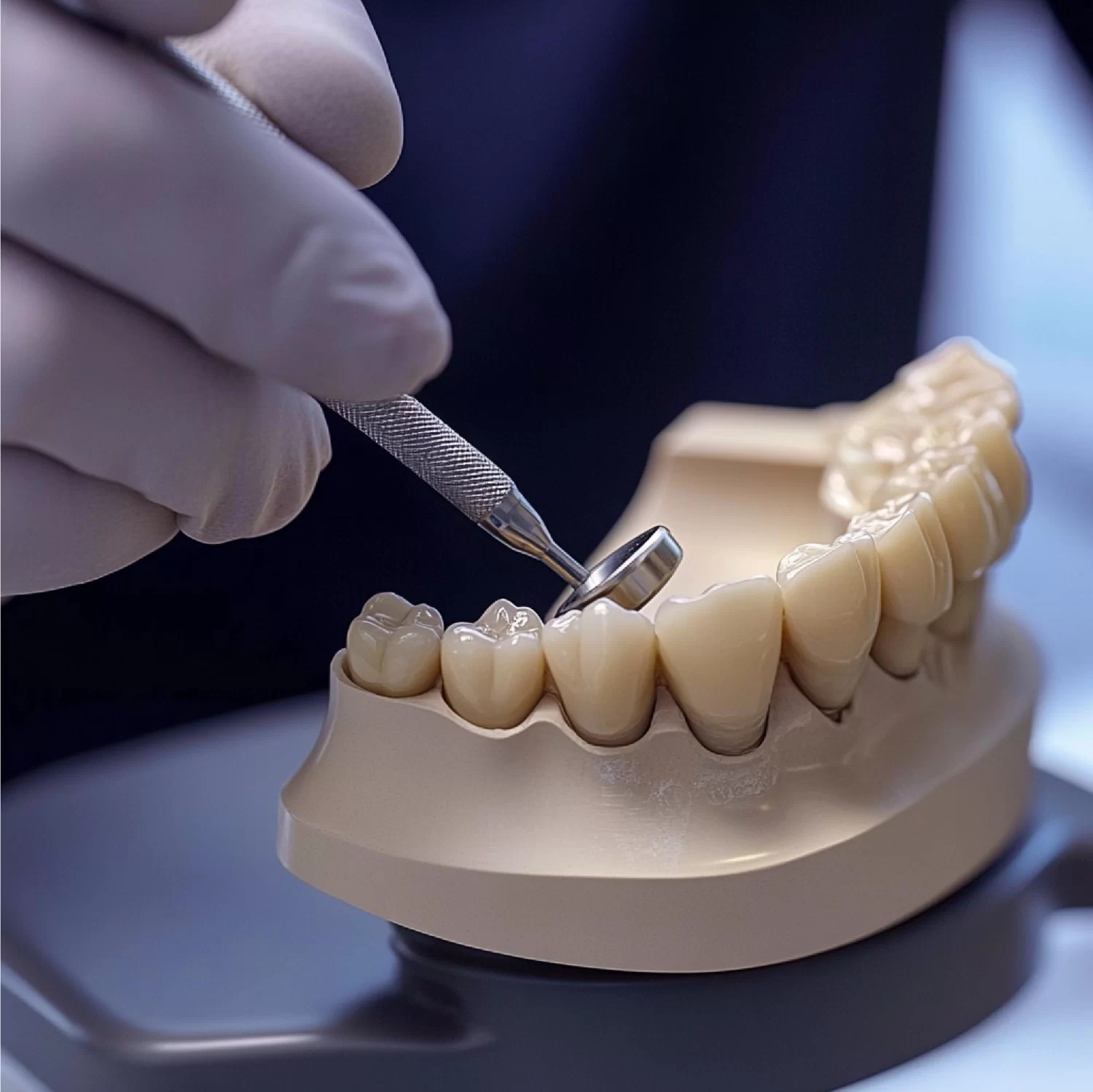General Dentistry
Crowns, Bridges, Inlays & Onlays
Crowns, bridges, inlays, and onlays are dental restorations used to restore damaged or missing teeth.
Crowns cover and protect a weakened tooth, while bridges replace missing teeth by connecting artificial teeth to adjacent ones.
Inlays and onlays are custom-made fillings that restore the chewing surface of a tooth.
These treatments help improve both the function and appearance of your teeth.
Lab-made dental restorations suitable for
Lab-made dental restorations are custom-crafted solutions designed to restore the strength, function, and appearance of damaged or missing teeth. These include crowns, bridges, inlays, and onlays—each serving specific purposes based on the extent of tooth damage. Crowns are used to fully cover and protect a weakened or heavily decayed tooth, restoring its shape and durability. Bridges are ideal for replacing one or more missing teeth by anchoring to adjacent teeth or implants, effectively “bridging” the gap. Inlays and onlays are partial restorations used when a tooth is too damaged for a filling but doesn’t require a full crown. Inlays fit within the cusps of the tooth, while onlays cover one or more cusps. All of these restorations are fabricated in a dental lab using strong, aesthetic materials like porcelain or ceramic, ensuring a precise fit and natural-looking result.


Benefits of Dental Restoration
1
Restores Tooth Function
These restorations restore the ability to chew, bite, and speak normally, improving oral function.
2
Improves Aesthetic Appearance
Custom-made to match natural teeth, they enhance the smile and boost confidence.
3
Durability
Made from strong materials like porcelain or metal, these restorations are long-lasting and can withstand daily wear and tear.
4
Prevents Further Damage
Crowns, bridges, inlays, and onlays protect weakened or damaged teeth from further decay or fracture.
Frequently Asked Questions
How long do crowns, bridges, inlays, and onlays last?
These restorations can last anywhere from 10 to 15 years or more with proper care, though their lifespan depends on factors like material used and oral hygiene.
Are these restorations painful?
The procedures are generally not painful as local anesthesia is used to numb the area. Some mild discomfort or sensitivity may occur after treatment.
What is the difference between a crown and a bridge?
A crown covers a damaged tooth, while a bridge replaces missing teeth by attaching an artificial tooth to adjacent healthy teeth.
Are inlays and onlays better than traditional fillings?
Yes, inlays and onlays offer better durability and a more natural appearance compared to traditional fillings, and they cover more surface area of a tooth.
Can I get a crown, bridge, inlay, or onlay if I have sensitive teeth?
Yes, these restorations can be applied even if you have sensitive teeth, though your dentist may address the sensitivity before proceeding with treatment.
Get in Touch
Contact us today using this form and our support team will reach out as soon as possible.
Opening Hours
| Monday to Friday | 8:30 AM – 5:00 PM |
| Saturday | By appointment only |
| Sunday | Closed |
| Closed for Lunch | 1:00 PM – 2:00 PM |
Address
Kingston Hill Dental
21 Kingston Hill, Kingston Upon Thames, Surrey KT2 7PW
